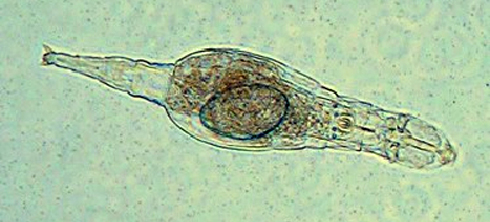Adineta ricciae (Bdelloid rotifer)
Bdelloid rotifers (“leech-like wheel bearers") are swimming or creeping unsegmented metazoans. Animals range in size from 100 to 2000 µm, with almost 400 taxonomic species comprising a class within phylum Rotifera.
Species detail
Bdelloid rotifers have several features that account for the ecological and evolutionary success of the group and make them outstandingly interesting model organisms:
- They are one of only three types of invertebrate metozoan (the others being tardigrades and some nematodes) able to undergo anhydrobiosis at all life stages.
- Anhydrobiosis (from the Greek for “life without water”) is the state of suspended animation, which certain organisms enter in response to desiccation.
- Another remarkable characteristic of bdelloids is even more unusual among animals, namely their ancient asexual reproduction.
Despite much observation of field and laboratory populations since bdelloid rotifers were described by Leeuwenhoek more than 300 years ago, neither meiosis, males, hermaphrodites, nor vestigial/rudimentary male structures have ever been demonstrated.
-

Taxonomy
Trace the evolution of the bdelloid rotifer back 80 million years, learn about the form and structure of the species and discover its lineage.
-

Biology and habitat
Read about the area where the bdelloid rotifer was first discovered and find out why it is used as a model organism in a range of experimental studies.
-

References
Get reference material for Adineta ricciae.
Author
Dr Natalie Pouchkina-Stantcheva
